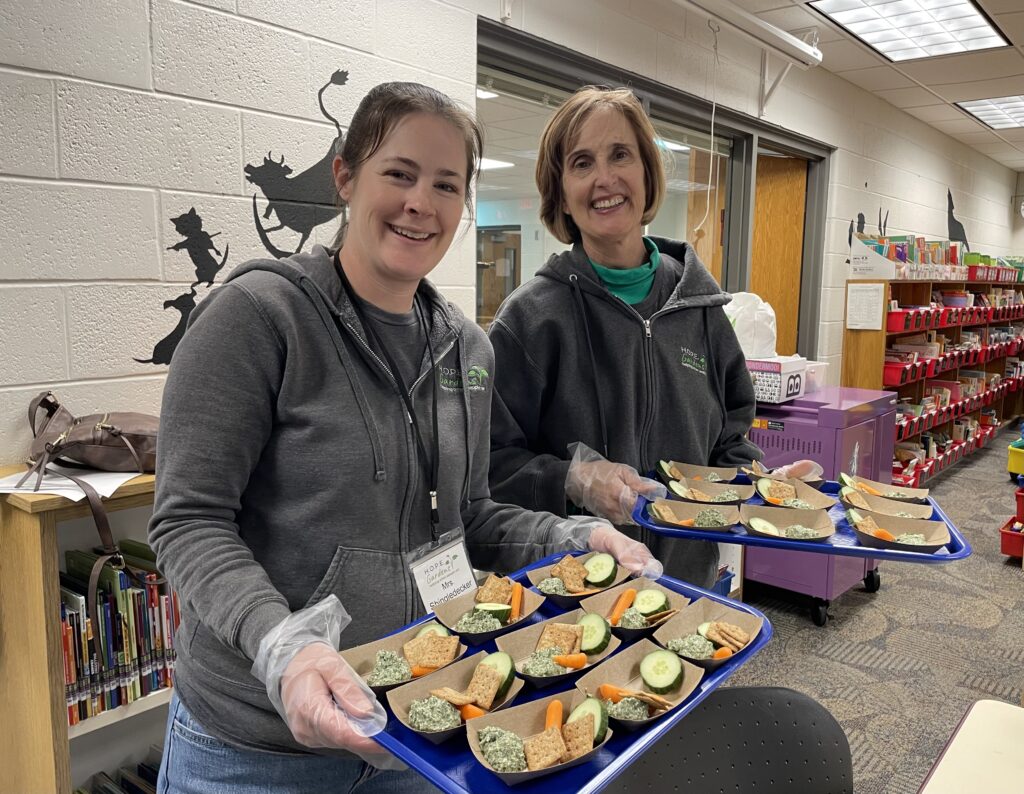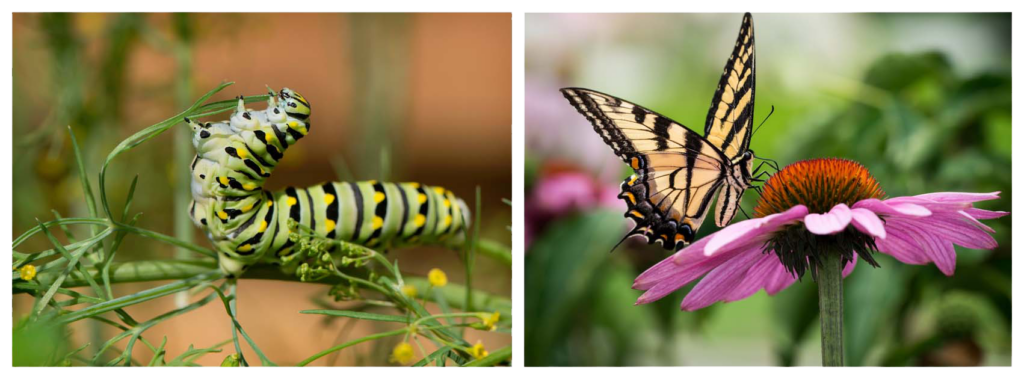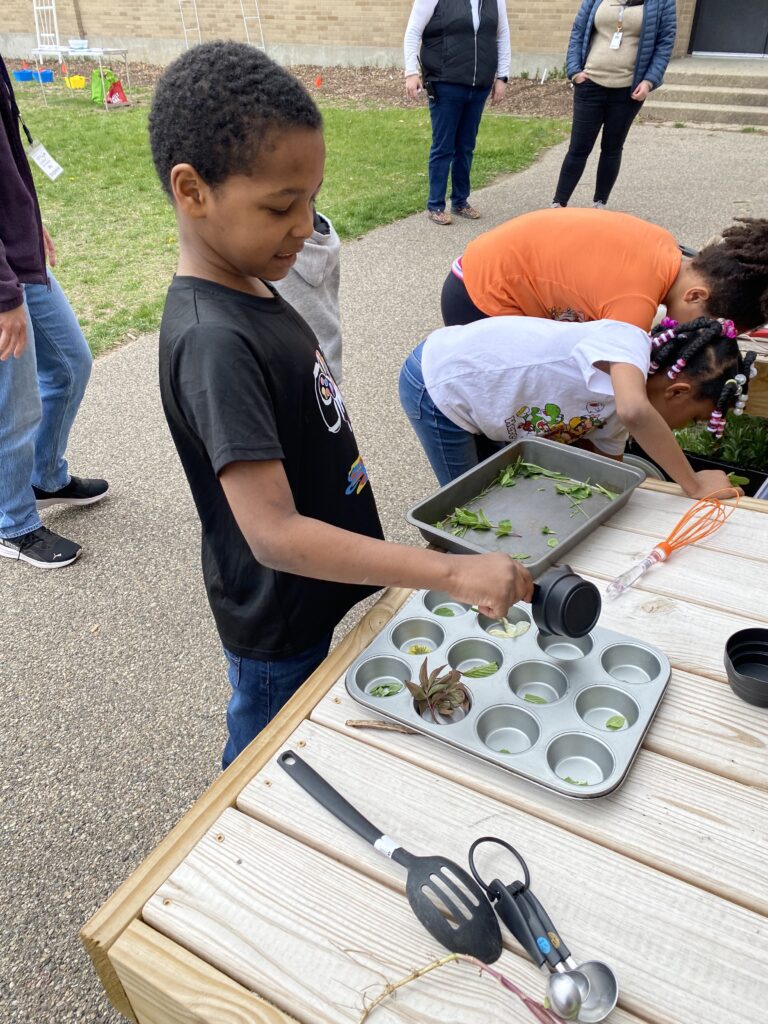by Kathy Bego, Garden Educator
During our April classes, kids engaged in well-designed “Fun and Games” to learn that the vegetables they grow in their school gardens are worth money! A short slide deck introduced the monetary value of produce by featuring shots of an abundant school garden harvest and a grocery store flier.
A clip of game show music from the “Price is Right” then transported each class to a studio set starring our students! Our student contestants were called to the front in panels of four to guess the price of a vegetable such as a bunch of carrots. Kids in the audience coached the contestants by waving fingers suggesting a price in dollars and by entering the revealed accurate amount on their individual price calculators.

After scooping up Dilly dip with crunchy vegetables, students marched, jogged, and skipped outside for more hands-on learning in three rotating “Farm Market” stations in the school garden. Station number one offered older students a chance to peer through microscopes at slides of clay and sand; for many, it was their first time using this type of equipment. Younger students relaxed while listening to a garden-themed story, Bottoms and Tops.

The second Farm Market station further reinforced the value of garden produce through action. Following individual grocery lists on their own paper bags, students energetically dashed about, shopping for vegetable cards among colorful baskets arrayed on the lawn. Using dried beans as dollars, students then carefully “paid” for their purchases calculated from displayed and illustrated price lists.
During the garden stations, students poked carrot and pea seeds into the cool spring soil. Switching senses, they then smelled and felt fresh dill leaves. Students learned that the caterpillars of swallowtail butterflies also like dill: these striped caterpillars can be found munching on its leaves and that of dill’s botanical cousins carrot and fennel in the summer school gardens. A “lion hunt” to find and perhaps pull out dandelions in the garden wrapped up the session along with the chance to feel frilly kale leaves.

Children acquire knowledge by acting things out and by role play. By using our senses, students can learn directly from nature, by seeing, for example, magnified sand grains, smelling fragrant sage, and feeling feathery dill leaves.

The creative curriculum of this hands-on April class channeled students’ curiosity and sense of fun into almost effortless learning about the economic value of garden produce, an advanced and abstract concept. Students also enjoyed a chance to be outside in the ever-more green days of Spring.
